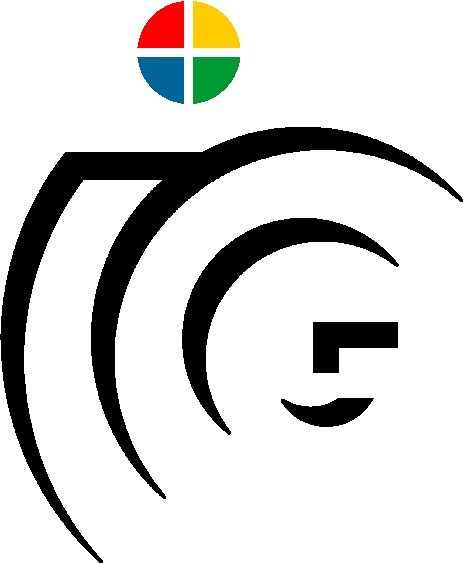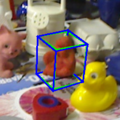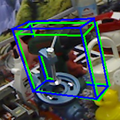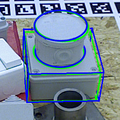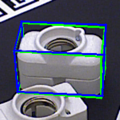We also handle challenging objects, which exhibit an axis of rotational symmetry such as the ones from the recent
T-LESS dataset: These objects makes training the CNN challenging because of having the similarity of two images of such an object under two different poses. We solve this problem by restricting the range of poses used for training, and by introducing a classifier to identify the range of a pose at run-time before estimating it. We obtain 54% of frames passing the Pose 6D criterion on average on several sequences of the T-LESS dataset, compared to the 67% of the state-of-the-art on the same sequences which uses both color and depth.
